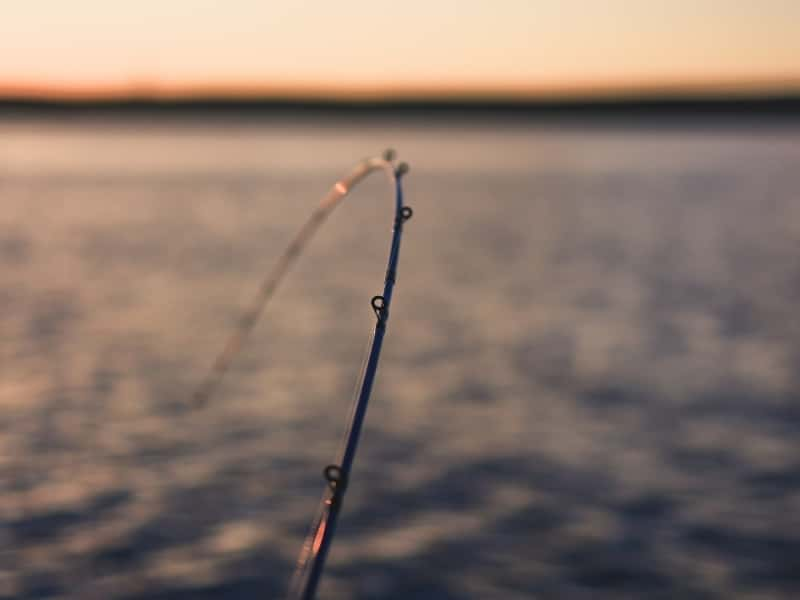Pike rods are available in a variety of lengths, powers and tip action. It's important to be able to choose the right tool for the job. This guide will cover the main features of Pike rods and everything you need to know before buying one. We also have a guide on both Hard Plastic Lures and Soft Plastics with Jig Heads if you're interested.
LENGTH
The recommended length for a Pike rod by many anglers is either 7ft to 9ft. Although they come in shorter and longer versions there are a few reasons why both 7ft, 8ft and 9ft are the great lengths. Firstly if you're fishing rivers or big canals then usually you'll want to stay mobile especially when lure fishing for pike. Longer rods like 12ft can be a hassle to carry around if you're constantly on the move. Although, longer rods can work better on large lakes when you are looking to cast further distances and stay static. On the other hand, shorter rods will struggle to reach further distances and may not have a high enough strength for larger Pike.
The length and reel size can also play a big part in the overall balance. When choosing a rod and reel it's important to make sure they will balance correctly and you wont end up with a tip or butt heavy rod. By having a reel that's too heavy for lure fishing then you'll find your arm and hand will quickly get exhausted.
ROD MATERIAL
There are two main types of materials used for Pike rods are plastic and carbon. Plastic rods will be the cheapest however they will still work great. Although plastic rods will be cheaper they still have a really good durability. However as it's a cheaper material there will be some disadvantages over carbon rods. The plastic rods will be heavier and have a lower sensitivity and this should be considered because both weight and sensitivity can be important factors when lure fishing.
Carbon Rods are more expensive however they are lighter and have a better sensitivity than plastic rods. Although carbon rods have been known to crack so it's important to handle them with a bit more care.

CASTING WEIGHT AND ROD POWER
Typically larger predators including Pike and Catfish will require a stronger rod with more power. Pike are strong fighting fish so using lighter setups will not have a great outcome. The power also known as the test curve is how much weight it takes to bend the rod tip to ninety degrees while in a horizontal position. Most predator rods will have a test curve between 3lb and 5lb which will be strong enough to handle most Pike or Catfish.
The casting weight is another important feature to look out for. Shorter rods with less power will likely have a low casting weight. There's a huge variety of lures and jig heads out there with many different weights. Depending on the fish size you are going for then matching a rods casting weight and power to the size of the Pike will be a good idea. A popular casting weight is between 15 and 50 grams which will allow you to use a good variety of lures. Although there are heavy rods which have higher casting weights allowing you to cast the larger and heavier lures.

 Bait
Bait
 Bait Accessories
Bait Accessories
 Bait Boats & Accessories
Bait Boats & Accessories
 Barrows & Trolleys
Barrows & Trolleys
 Bedchairs & Accessories
Bedchairs & Accessories
 Bite Alarms & Accessories
Bite Alarms & Accessories
 Bite Indicators
Bite Indicators
 Bivvies & Brollys
Bivvies & Brollys
 Boats
Boats
 Books/Media
Books/Media
 Catapults & Accessories
Catapults & Accessories
 Chairs & Accessories
Chairs & Accessories
 Clothing
Clothing
 Cooking Equipment
Cooking Equipment
 Fish Care
Fish Care
 Fly Lines
Fly Lines
 Lighting
Lighting
 Luggage
Luggage
 Lures
Lures
 Mainlines
Mainlines
 Nets
Nets
 Pole Accessories
Pole Accessories
 Pole Support
Pole Support
 Poles & Whips
Poles & Whips
 Reels
Reels
 Rod & Reel Kits
Rod & Reel Kits
 Rod Support
Rod Support
 Rods
Rods
 Scales
Scales
 Seat Boxes & Accessories
Seat Boxes & Accessories
 Terminal Tackle
Terminal Tackle
 Tools
Tools
